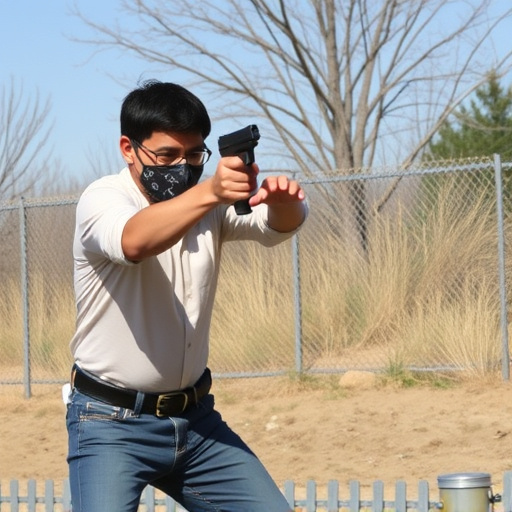Stun guns are powerful tools for self-defense, temporarily disabling attackers with electric shocks lasting 2-5 seconds (up to 10 seconds in some models). Factors like voltage and body type influence incapacitation duration. Top brands like Taser, Olight, and Sabre offer advanced features such as adjustable shock intensity and LED flashlights. Legality varies across jurisdictions; users must understand local laws and maintain records of certification and maintenance. Training is crucial for effective deployment and responsible use.
The widespread availability of stun guns has sparked interest in personal safety, but understanding their muscle incapacitation duration is crucial. This comprehensive guide explores the science behind stun gun impacts, delving into the factors influencing paralysis time and providing a critical analysis of top-rated self-defense stun guns on the market. We examine real-world applications, legal implications, and training tips to ensure informed decisions. Discover how these elements shape your safety strategy when considering best-rated stun guns for self-defense.
- Understanding Muscle Incapacitation: What Happens When Stun Guns Hit?
- Factors Influencing Duration of Muscle Paralysis from Stun Guns
- Best-Rated Stun Guns on the Market: A Review
- Self-Defense Considerations: How Long Should You Expect to Be Safe?
- Legal Aspects: Understanding the Aftermath of Using a Stun Gun
- Training and Practice: Maximizing Effectiveness in Real Scenarios
Understanding Muscle Incapacitation: What Happens When Stun Guns Hit?

When a stun gun makes contact with a target, it delivers an electric current that disrupts muscle control in the hit area. This sudden jolt causes immediate muscle incapacitation, enabling the user to gain time and distance from potential threats. The duration of this effect varies depending on several factors, including the power output of the stun gun and the specific muscles targeted.
Best-rated stun guns for self-defense are designed to deliver powerful but controlled shocks that can temporarily disable an attacker for several minutes. Studies show that even a brief period of muscle incapacitation—as little as 3-5 seconds—can be enough to escape or call for help, making these devices valuable tools for personal safety and defense.
Factors Influencing Duration of Muscle Paralysis from Stun Guns
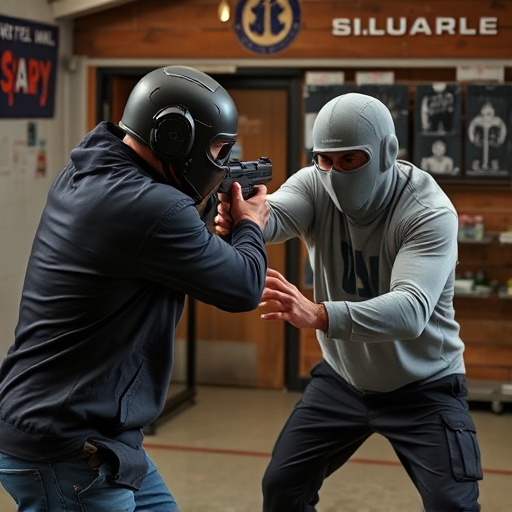
Several factors play a significant role in determining the duration of muscle incapacitation caused by stun guns, which are often considered best-rated tools for self-defense. The primary influence is the electrical current’s strength and delivery system. Higher voltage levels generally result in longer periods of paralysis as they disrupt muscular control more effectively. Additionally, the stun gun’s contact points with the body matter; multiple or larger contact areas can enhance the effect by increasing the electrical flow to targeted muscles.
Other considerations include the subject’s physical condition, such as muscle strength and nervous system sensitivity. Fatter individuals may experience longer durations due to higher electrical resistance in their bodies, while those with heightened sensitivity could recover faster. Environmental factors like temperature and moisture can also impact performance, affecting both the stun gun’s efficiency and the subject’s ability to withstand the shock, thus influencing the overall duration of muscle incapacitation.
Best-Rated Stun Guns on the Market: A Review
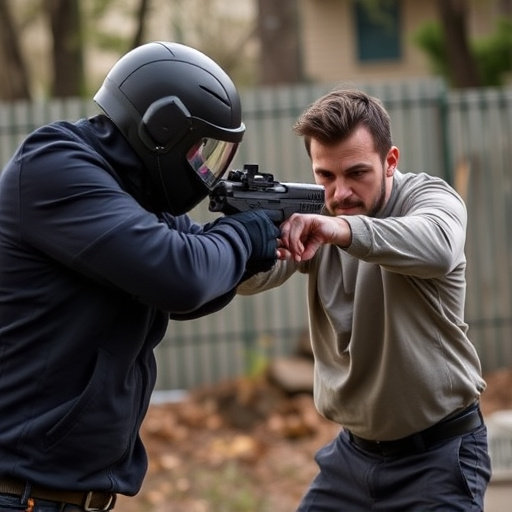
When it comes to the best-rated stun guns for self-defense, several models stand out due to their combination of power, portability, and reliability. These devices are designed to incapacitate an attacker temporarily, allowing users to escape or call for help. Top-tier brands like Taser, Olight, and Sabre offer advanced features such as high voltage output, LED flashlights, and ergonomic designs that make them user-friendly in stressful situations.
Among the best-rated stun guns on the market, the Taser X26P is a popular choice for law enforcement and civilians alike. It delivers powerful jolts with adjustable intensity levels, ensuring precise control over the situation. Olight’s S30R 18000 Lumens Flashlight Stun Gun combines high-intensity lighting with an electric shock, making it versatile for self-defense scenarios. Sabre’s Red Stun Gun is another top contender known for its durability and consistent performance, featuring a powerful stun and a built-in flashlight for enhanced visibility during nighttime incidents.
Self-Defense Considerations: How Long Should You Expect to Be Safe?
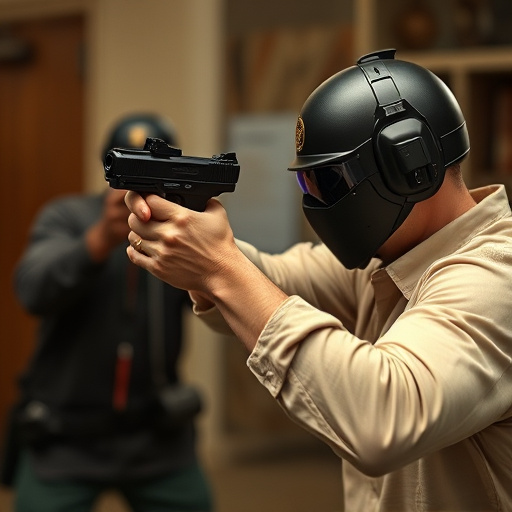
When considering self-defense, understanding the muscle incapacitation duration from a stun gun is crucial. Top-rated stun guns for self-defense are designed to temporarily disrupt an assailant’s muscular control, giving the user precious time to escape or seek help. The average muscle incapacitation time from a stun gun ranges from 2 to 5 seconds, with some high-end models offering even longer durations up to 10 seconds.
This brief period of disability can significantly enhance your safety, allowing you to deter an attacker and create a gap for your escape. While the duration may seem short, it’s long enough to enable effective self-defense when combined with proper training and quick thinking. Remember that factors like the stun gun’s voltage, the assailant’s body type, and the specific strike zones can influence the effectiveness and length of incapacitation.
Legal Aspects: Understanding the Aftermath of Using a Stun Gun
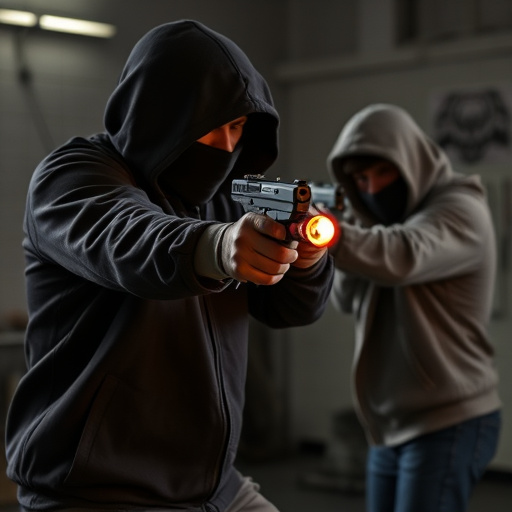
The legal landscape surrounding stun guns varies significantly across jurisdictions, reflecting complex debates about personal safety and public order. While many regions permit their use for self-defense, strict regulations control their possession and deployment. When using a stun gun, individuals must understand the potential consequences, both legal and physical. Even with best-rated stun guns designed for self-defense, users can face charges if they employ excessive force or violate local laws.
After an incident involving a stun gun, individuals should be aware of their rights and obligations. Local law enforcement will investigate the circumstances surrounding the use of force, assessing whether it was reasonable and in line with legal standards. Records of the stun gun’s certification and maintenance are crucial to demonstrating responsible use. Consulting with legal counsel specializing in self-defense cases is advisable to navigate potential legal repercussions effectively.
Training and Practice: Maximizing Effectiveness in Real Scenarios
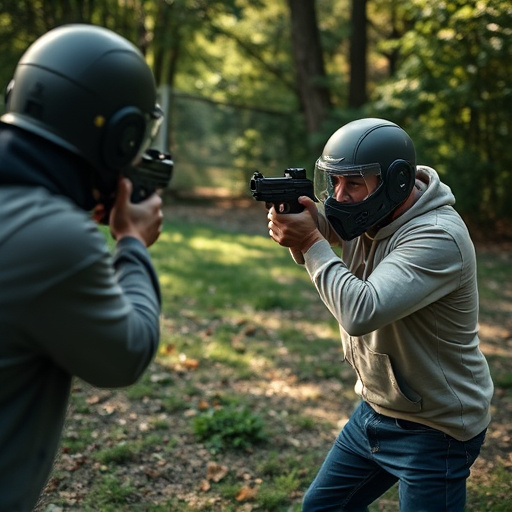
Training and practice are essential components in maximizing the effectiveness of best-rated stun guns for self-defense. Regular simulations of real-life scenarios allow users to familiarize themselves with the weapon’s range, power, and deployment techniques. This preparation ensures that individuals can respond swiftly and accurately during an actual emergency, minimizing the time it takes to incapacitate a threat.
By engaging in consistent training, users can develop muscle memory, enabling them to react instinctively when faced with danger. Practice sessions should cover various distances, angles, and defensive maneuvers to enhance versatility. Moreover, understanding the legal implications and safety protocols associated with stun gun usage is crucial, as it promotes responsible and effective self-defense strategies.
In conclusion, understanding the duration of muscle incapacitation from stun guns is crucial for effective self-defense. As discussed, factors like the stun gun’s voltage, contact time, and individual physiological differences play significant roles in determining how long a target remains incapacitated. While stun guns are powerful tools for personal safety, choosing the best-rated stun guns for self-defense among the options available is essential to ensure their effectiveness. Proper training and practice are also vital to maximize their impact in real-life scenarios, and being aware of legal considerations can help users stay within the boundaries of the law while protecting themselves or others.
